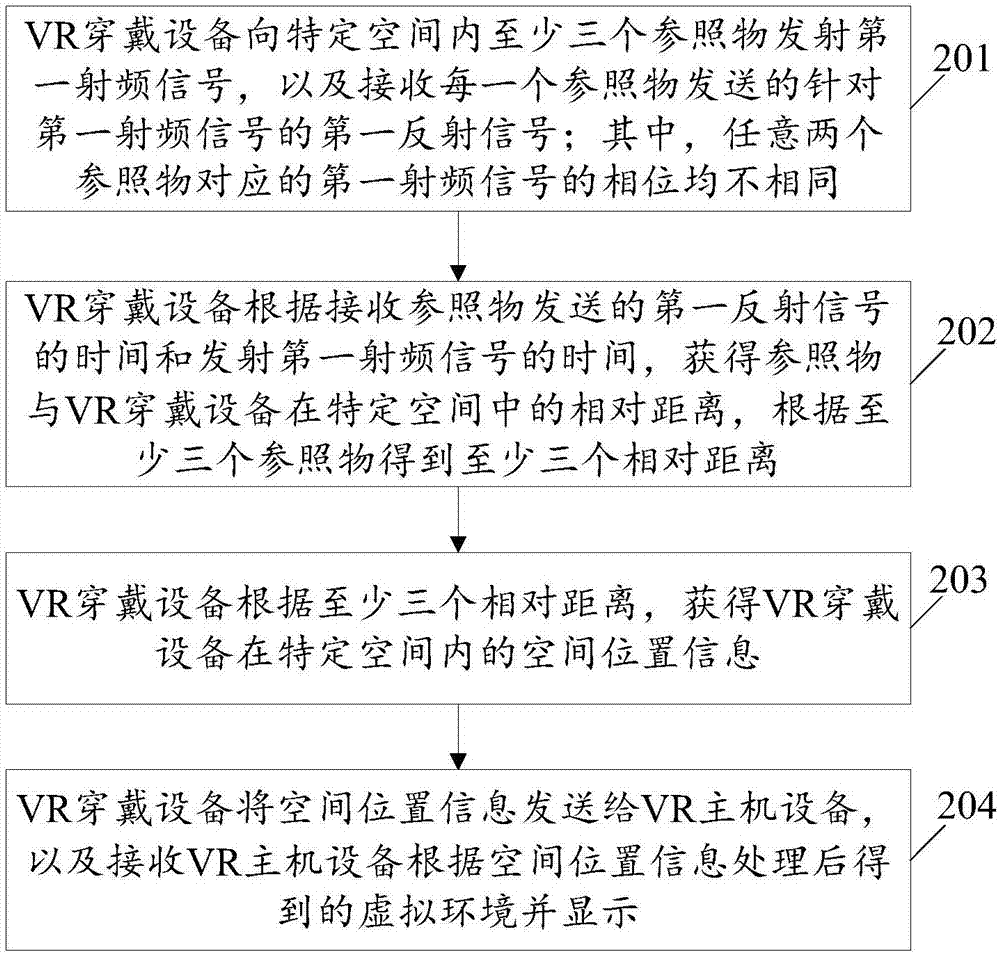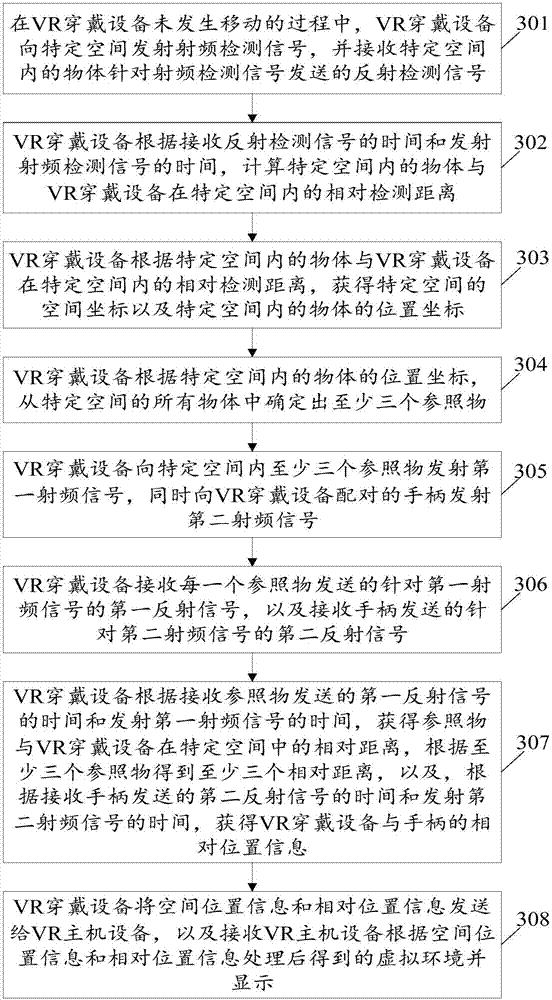Spatial position detection method and system and VR wearing device
A wearable device and spatial location technology, applied in the field of virtual reality, can solve problems such as failure to provide a strong sense of immersive experience, lack of interaction in VR applications, etc., and achieve the effect of improving the sense of immersive experience
- Summary
- Abstract
- Description
- Claims
- Application Information
AI Technical Summary
Problems solved by technology
Method used
Image
Examples
Embodiment 1
[0065] see figure 2 , figure 2 It is a schematic flow diagram of the spatial position detection method disclosed in the embodiment of the present invention; as figure 2 As shown, a spatial position detection method may include:
[0066] 201. The VR wearable device transmits a first radio frequency signal to at least three reference objects in a specific space, and receives a first reflected signal for the first radio frequency signal sent by each reference object; wherein, any two reference objects correspond to the first radio frequency signal The phases of the RF signals are all different;
[0067] to combine figure 1 , the VR wearable device scans the radio frequency signal in a specific space to establish the spatial coordinates of the specific space, and determines at least three reference objects (details will be described in detail in subsequent embodiments, and will not be repeated here.), the specific The space corresponds to the space coordinates of the virtua...
Embodiment 3
[0099] see Figure 4 , Figure 4 It is a schematic structural diagram of a VR wearable device disclosed in an embodiment of the present invention; as Figure 4 As shown, the VR wearable device is connected to the VR host device through the Type-C interface, and the VR wearable device may include:
[0100] The first signal transceiving unit 410 is configured to transmit the first radio frequency signal to at least three reference objects in a specific space, and receive the first reflected signal for the first radio frequency signal sent by each reference object; wherein, any two reference objects The phases of the corresponding first radio frequency signals are all different;
[0101] The first distance calculation unit 420 is configured to obtain the relative distance between the reference object and the VR wearable device in a specific space according to the time of receiving the first reflected signal sent by the reference object and the time of transmitting the first rad...
Embodiment 4
[0107] see Figure 5 , Figure 5 Another structural schematic diagram of the VR wearable device disclosed in the embodiment of the present invention; Figure 5 The VR wearable shown is in Figure 4 Optimized based on the shown VR wearable device, such as Figure 5 As shown, the VR wearable device also includes:
[0108] The second signal transceiving unit 510 is configured to transmit a second radio frequency signal to the paired handle of the VR wearable device while the first signal transceiving unit 410 transmits the first radio frequency signal to at least three reference objects in a specific space;
[0109] The second signal transceiving unit 510 is further configured to, after the second signal transceiving unit 510 transmits the second radio frequency signal to the handle paired with the VR wearable device, receive a second reflected signal sent by the handle for the second radio frequency signal;
[0110] The second distance calculation unit 520 is configured to o...
PUM
 Login to View More
Login to View More Abstract
Description
Claims
Application Information
 Login to View More
Login to View More - R&D
- Intellectual Property
- Life Sciences
- Materials
- Tech Scout
- Unparalleled Data Quality
- Higher Quality Content
- 60% Fewer Hallucinations
Browse by: Latest US Patents, China's latest patents, Technical Efficacy Thesaurus, Application Domain, Technology Topic, Popular Technical Reports.
© 2025 PatSnap. All rights reserved.Legal|Privacy policy|Modern Slavery Act Transparency Statement|Sitemap|About US| Contact US: help@patsnap.com



